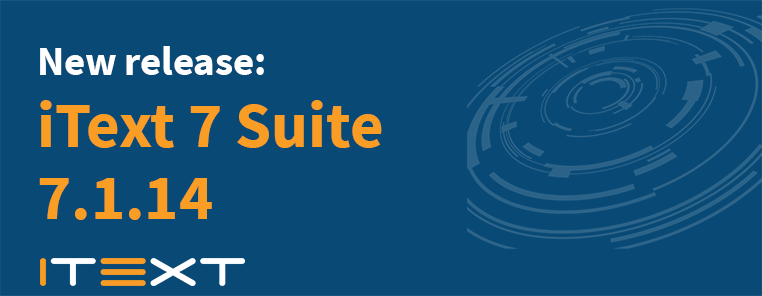
We have been asked this question a number of times in recent months, and the simple answer is “Yes”. Using iText 7, you can create accessible PDF/UA-1 documents which are compliant with the revised Section 508 of the United States Rehabilitation Act. However, ensuring your PDF documents are not just compliant, but truly accessible is not quite that simple, so we’d like to explore and explain a little of the background of accessibility, Section 508, and the PDF/UA specification.
What is accessibility, and why is it important?
Information accessibility is enormously important in the modern digital age. With an ever-increasing number of ways to consume information (TV screens, smartwatches, computers, phones/tablets etc.) it is vitally important that it should not only be available through a range of different media, but also that you reach more and more people regardless of their technical prowess, disabilities or means of interacting with technology. Several rules and regulations have been created to address these challenges and allow everyone the same basic access to information that we sometimes take for granted.
What are these accessibility regulations?
The Web Accessibility Initiative (WAI) is an effort by the World Wide Web Consortium (W3C) to improve the accessibility of the web for people with disabilities by defining principles, guidelines, success criteria, benefits, and examples that explain the requirements for making web-based information and applications accessible. In 2008 the W3C published its Web Content Accessibility Guidelines (WCAG) 2.0, with the updated version 2.1 being published in 2018
Most countries (including those in the European Union) have adopted web accessibility standards based on these guidelines. Similarly, in the United States, Section 508 of the U.S. Rehabilitation Act identifies WCAG 2.0 Level AA as its standard (among other requirements), and requires that electronic and information technology allow both federal employees, and members of the public with disabilities to have access to and use of information and data comparable to the access to and use of information and data by those without disabilities, providing that does not place an undue burden on the agency.
How do I make a PDF that complies with Section 508?
Section 508 applies to all digital documents but as far as PDFs are concerned, documents that comply with the PDF/UA-1 specification are what you need to meet the requirements. PDF/UA is the informal name for ISO 14289, the International Standard for accessible PDF technology. Originally published in 2012, it was updated in 2014 and In March 2016 AIIM and ANSI published PDF/UA as an American National Standard. Essentially, PDF/UA is to PDF what the Web Content Accessibility Guidelines are to web pages, and iText supports the current PDF/UA-1 standard.
How do I use iText to output PDF/UA documents?
Outputting a PDF/UA document with iText requires you to do the following:
- You tell iText that you’re going to create a Tagged PDF
- You add a language specifier.
- You change the viewer preferences so that the title of the document is always displayed in the top bar of the PDF viewer and then add the title to the document’s metadata.
- All fonts need to be embedded
- All the content needs to be tagged, and images require a description of the image using alt text.
Are my PDFs now Section 508 compliant?
That depends on your document, and the information it contains. Simply outputting a PDF/UA document does not necessarily mean that it will comply with Section 508; to meet the accessibility requirements you need to ensure that your document also meets the WCAG 2.0 Level AA standard, which means some extra effort is required before you are ready to create a PDF/UA with iText. There are automated tools available such as the Accessibility checker built into Adobe Acrobat, but these tools are not infallible and may have problems accurately testing content. For example, software may check that all images are tagged, but an image that is tagged as “image1” cannot be considered as accessible.
Another common pitfall with tags is the reading order of the PDF. Assistive technologies such as screen readers rely on information contained in tags to help understand the order in which information should be read to users, so it is essential to ensure the reading order is correct for accessibility when creating your document. If not, assistive technology users may not be able to understand the content. For example, if your document has multiple columns, the reading order is visually clear to sighted users as text flows from the bottom of the first column, to the top of the next column. However, if the document is not tagged correctly, a screen reader may read the document from top to bottom, across both columns, interpreting them as one column.
How can I make sure my PDFs are compliant with Section 508?
A good reference for accessibility is the W3C Techniques for WCAG 2.1 document comprising 23 separate PDF techniques for achieving conformance with the updated WCAG 2.1 specification, which provides additional criteria to address mobile accessibility, people with low vision and people with cognitive and learning disabilities. Although Section 508 compliance does not require the additional WCAG 2.1 guidelines, it may be wise to ensure your documents meet these requirements in case of future revisions to the Section 508 standards, and to improve overall accessibility for a wider audience.


